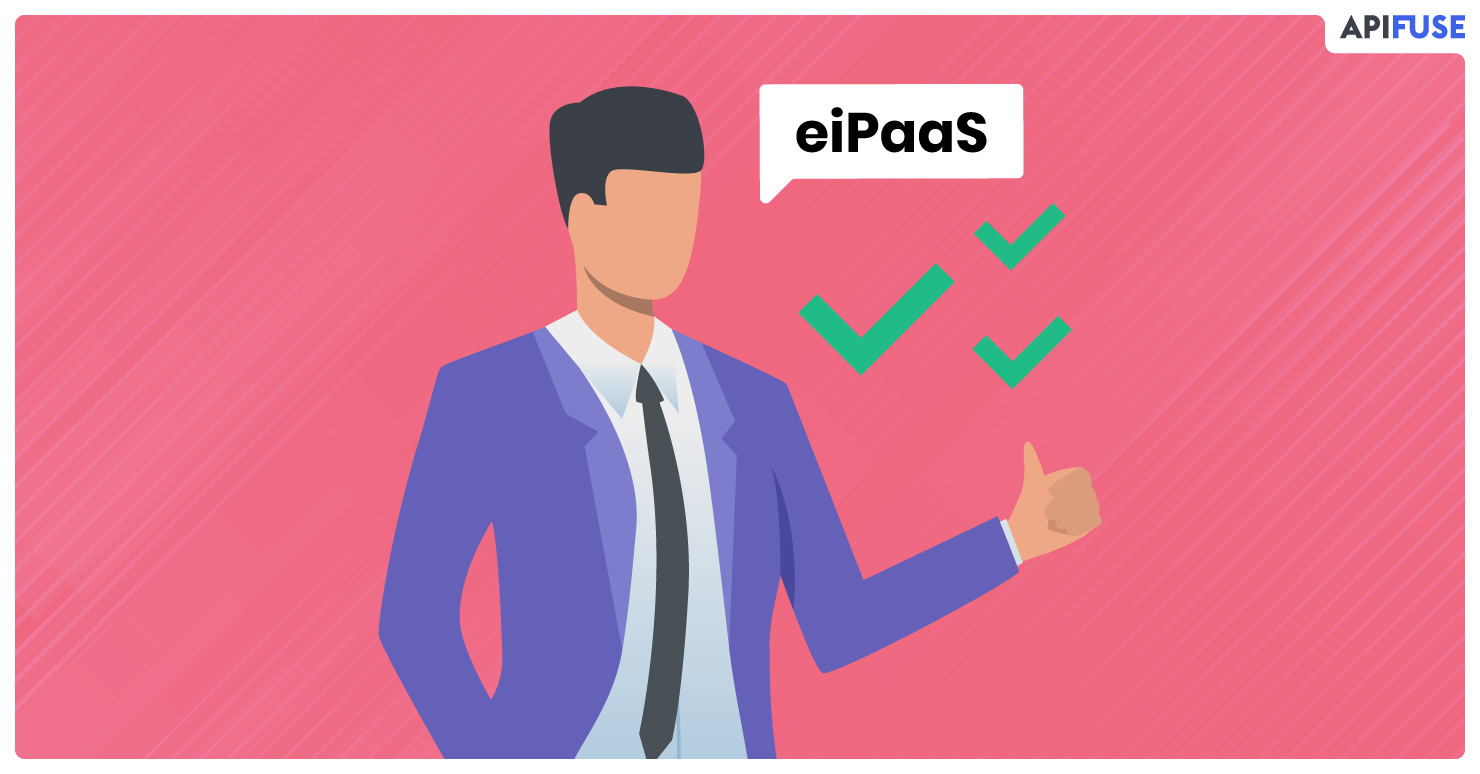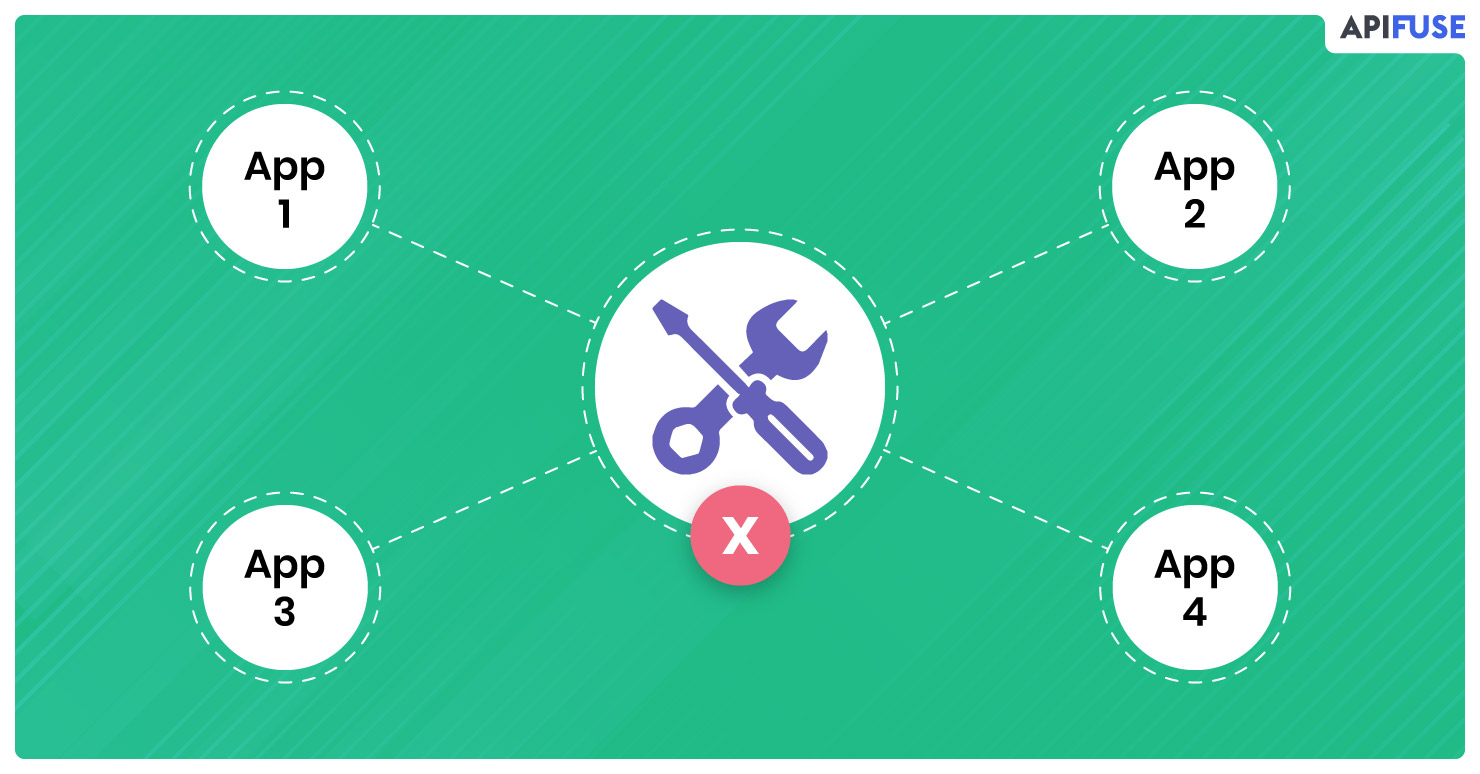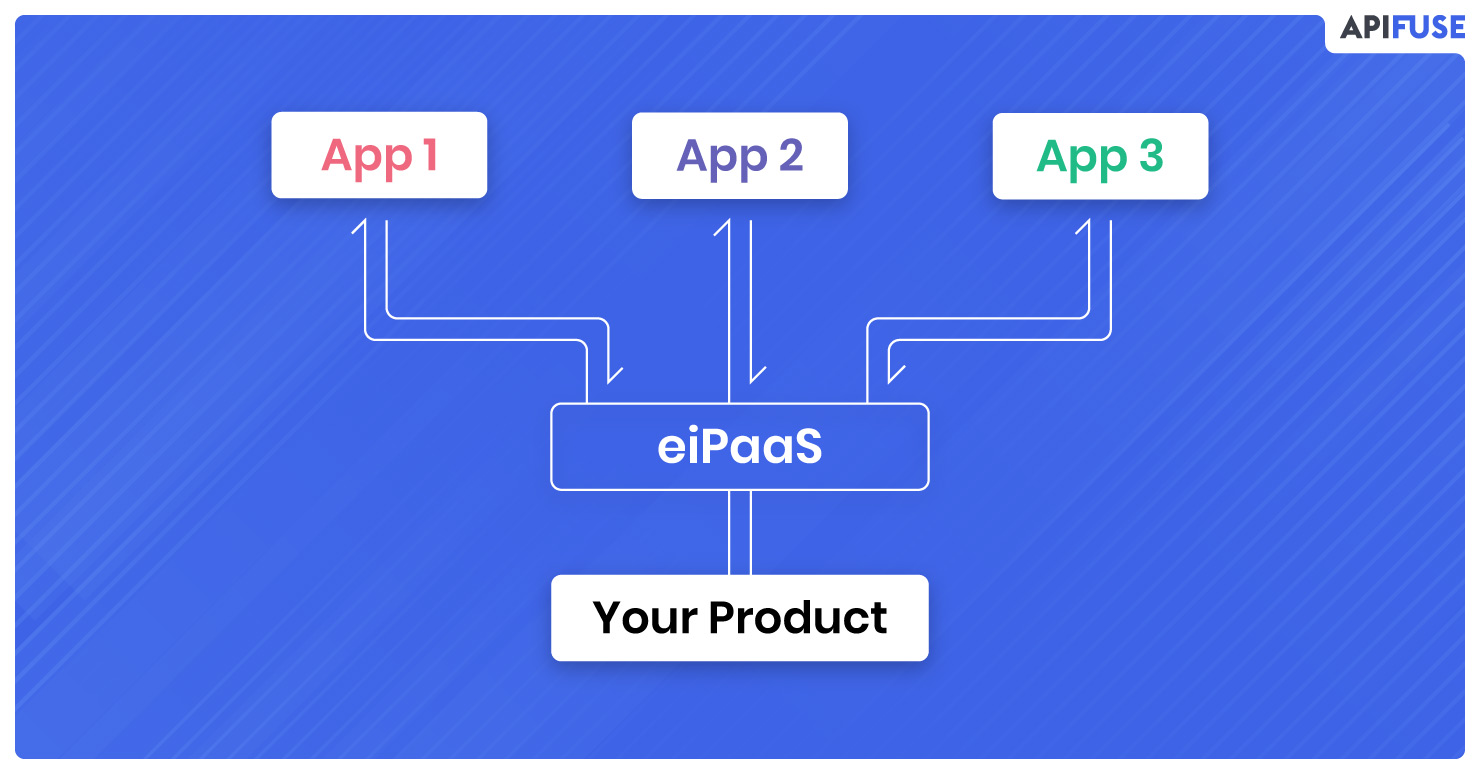SaaS companies need to evolve to keep up with the demands of new features that end-users are requesting.
Operating a business in such a mercurial environment needs agile solutions, and that’s the main benefit of Embedded iPaaS. It enables developers, product managers and customer success teams to deliver the best possible customer experience when dealing with end user integration requests. In return, technology teams can focus on their core product offerings and not fragile integration code.
What are the Benefits of Embedded iPaaS?

An Integration Platform as a Service or iPaaS solution is the bridge that connects a SaaS application with other cloud services or on-prem systems.
An Embedded iPaaS or EiPaaS empowers SaaS solutions to offer workflow automation and integrations to end-users right from inside their application. And they can do it without writing custom code every single time.
Before iPaaS, if two applications had to talk to each other, you needed to code a bridge between them. You had to build the integration from scratch, and you had to maintain the bridge.
On top of it, if the API of one application was tweaked, the integration had to be adjusted to account for the change.
Essentially, any integration ate up a lot of developer manpower. That brings us to the first and most crucial advantage of embedded iPaaS.
1. No-code integration

As we said, integration requires coding – the building blocks that help one app talk to another. Writing the code means understanding the other application and then coding the communication capabilities.
It requires technical skill and, not to say, time. An embedded iPaaS eliminates this and puts the power in the hands of the business user to define the logic.
2. One platform for custom and self-service
Embedded iPaaS platforms have hundreds of pre-built connectors. For most applications, you want to partner with or your customers demand, the only effort you have to make is to tap a button to embed it into your SaaS application. This self-service integration is beneficial not just for your team but also for your users.
But there are times when a user may request a custom integration. Or you might decide to integrate with an application that’s not included in the EiPaaS.
In this use case, you can simply build your own custom connectors in the platform and then expose the workflow builder to your customers to build their custom integration with their desired application. So, within a single platform, you get two services – custom and self-service integration that are reusable and fully customizable. This flexibility is the key to productized integrations that open the doors to new revenue opportunities.
3. No need to maintain an integration

Integrations need constant monitoring because APIs change with new versions released ever so often. An embedded integration platform takes care of even this responsibility.
They have tests and processes in place that keep an eye on integrations. When an update is needed to ensure all connectors are working, they release it.
4. Faster time-to-market
Because you are free from the burden of coding and maintaining the integration, the time-to-market is slashed exponentially. Unlike other solutions that are time-consuming, with an embedded iPaaS, you get the benefit of building native integrations within minutes. Moreover, you can launch multiple integrations fast without adding technical debt.
5. No need for heavy-lifting
By default, the EiPaaS does all the heavy work that comes with new integrations. From error handling to pagination, from automatic retry to authentication, the embedded iPaaS performs all these tasks. If the service is not included in the package, the embedded iPaaS will give you tools that simplify them.
Since the embedded integration platform pulls off all the incidental duties, you are free to prioritize your application’s core features.
6. Save up on overheads
Another major benefit of an embedded integration platform is the cost. Here’s how:
- It dramatically lowers the development overhead as compared to building integrations from scratch.
- You don’t have to bear the expense of maintaining, updating, and upgrading the integration.
- It’s subscription-based with predictable monthly or annual costs vs. unknown internal development costs that may fluctuate based on requirements.
- It’s very scalable, so you save on capacity investment when the business grows.
Keep in mind that you’re not just saving dollars. You’re also saving on human resources, which you can divert on building your application – the core business value.
7. Be independent of developers
One of the single most crucial components of customer satisfaction is integrations. That’s why rapid time-to-market is critical. But that doesn’t imply any integration will do. SaaS apps need to roll out integrations that will help end-users get their job done.
Since those directly communicating with end-users know their problems and needs better, they should be the ones building the integrations.
Any staff, technical or non-technical, can utilize the platform to create integrations and respond to these end-user integration requests directly without dependency on developers.
8. Get the power of workflow automation

If there is a benefit of embedded iPaaS at par with no coding, then it’s workflow automation. The movement of data in the real world is chaotic. Rarely is it as simple as moving information from one application to another.
As HubSpot put it, “Over time, we’ve learned that things aren’t so linear, and consumers rarely use just one software to satisfy all of their needs. Instead, they find a plugin here, some software there, and maybe even a widget until they have a smorgasbord of options that, together, create the perfect solution.”
What most end-users want is multiple apps connected to form one workflow. Besides, they wish to control when apps ‘talk’ to each other, how data is exchanged, and the data flow. Point-to-point integrations don’t have these capabilities.
Embedded iPaaS does!
When SaaS businesses utilize EiPaaS, they enable end-users:
- To connect several apps.
- Create their own business logic on how and when data is exchanged.
Further, embedded platforms have a drag-and-drop feature. So, not only the end-user has complete control over the workflow but can also build it with ease. The cherry on top is the customizations to workflow automation.
9. Make your SaaS application sticky
End-users will reach a stage in the journey when they require advanced, sophisticated features. Called power users, they are the most intensive users of SaaS apps and know how to extract maximum efficiency.
If you don’t fine-tune your application to their needs, such as providing custom logic for workflow, they will churn. Embedded iPaaS helps you retain these power users by offering customizable automation. Moreover, with the drag-and-drop builder, users can build in daily tasks right within your SaaS application. They don’t have to look for solutions with third parties.
All in all, EiPaaS makes your product sticky for two reasons. One, it keeps users within it. Two, users can make the most out of your application.
10. Scaling becomes easy
One connector is a breeze. The second connector is easy. The third connector takes time. And as you keep developing more connectors to third-party apps or platforms, operating them keeps getting more challenging. Why? Because you’re linking your API to a new API every single time. You end up in a brittle situation. This is not a scalable approach.
But with an embedded iPaaS, you build connectors to your API only once. Any new API links to yours through an interface, which makes the approach scalable. Since the EiPaaS acts like an integration hub, it prevents fragile scenarios. That’s why the architecture of EiPaaS supports high levels of throughputs. You can keep expanding your connections and your customer bases without any trouble.
Not-so-obvious Benefits of Embedded iPaaS

The advantages of embedded iPaaS we’ve discussed till now are easy to see even if you haven’t used an EiPaaS. But it’s once you embed an iPaaS into your SaaS product that you get a clear view of its value.
For instance, the embedded integration platform gives you a centralized location to manage all your applications, irrespective of whether they are on cloud or on-premises. And you gain this perk without the need to deploy heavy middleware.
Another considerable advantage is white-labeling integrations. With embedded iPaaS, you deliver a fully white-labeled integration marketplace and native integrations. You can blow your end-users away with out-of-the-box integrations that align entirely with your brand’s identity. This creates a seamless user experience. With EiPaaS, you can white-label:
- An Integration Marketplace
- Templates (Specific Integration Landing Page)
- Integration builder (Your users can build custom integrations right within your app)
One more merit of embedded iPaaS is end-user insights. With the embedded platform, you can list the integrations you want to build. Then gain more visibility on which of those integrations your end-users actually want and which should be culled from the list.
What’s more, you can gain critical insight into the usage of integrations with EiPaaS. It enables you to monitor the integrations and keep an eye on how they perform.
Lastly, you can monetize integrations with embedded iPaaS. You retain complete authority on how you wish to price integrations to your end-users. You can configure which integrations are available to them and the number of API calls allowed. You can even limit the customization capabilities for each of your unique plans.
Embedded iPaaS brings order to chaos.
As a SaaS business, you have one goal – gaining more and more end-users for your application. End-users have a different goal – to get jobs done. So, if you want more end-users, your SaaS application must help them get their jobs done.
The trouble is end-users don’t leverage only your solution to do a job. They use emails, CRMs, marketing apps, ERPs, document sharing, and more. They rely on an ecosystem of software, applications, and tools. Your product is merely one part of the tools that power their business.
Ergo, if you want end-users to accomplish their jobs (so you can gain more customers), extensively integrating with other applications is imperative. Why? Because allowing your SaaS product to talk with different tools and platforms simplifies an end-user’s job.
An embedded iPaaS accomplishes just that – fulfills all your integration requirements. It grants you and your end-users the ability to integrate with software, app, or tool of choice. In a gist, an EiPaaS helps you attract more customers.
That it also gives you a competitive advantage is a bonus. Without worrying about sending your users to third-party platforms, you can integrate new features and implement workflows.
The embedded integration platform also brings into the bargain time-saving. You save weeks, if not months, of writing code. Plus, you don’t have to maintain the integrations. And finally, you can exploit the benefits of branding the integrations as your own. These are the advantages embedded iPaaS brings to the table!
API Fuse enables you to offer on-demand integrations so that you can help your customers get their jobs done. With our solution and range of plans, you can provide your customers native or custom integrations embedded directly into your SaaS app in minutes to accelerate your product roadmap and reduce technical debt. If you want to lower your customer churn rate, request a demo today for more information!
